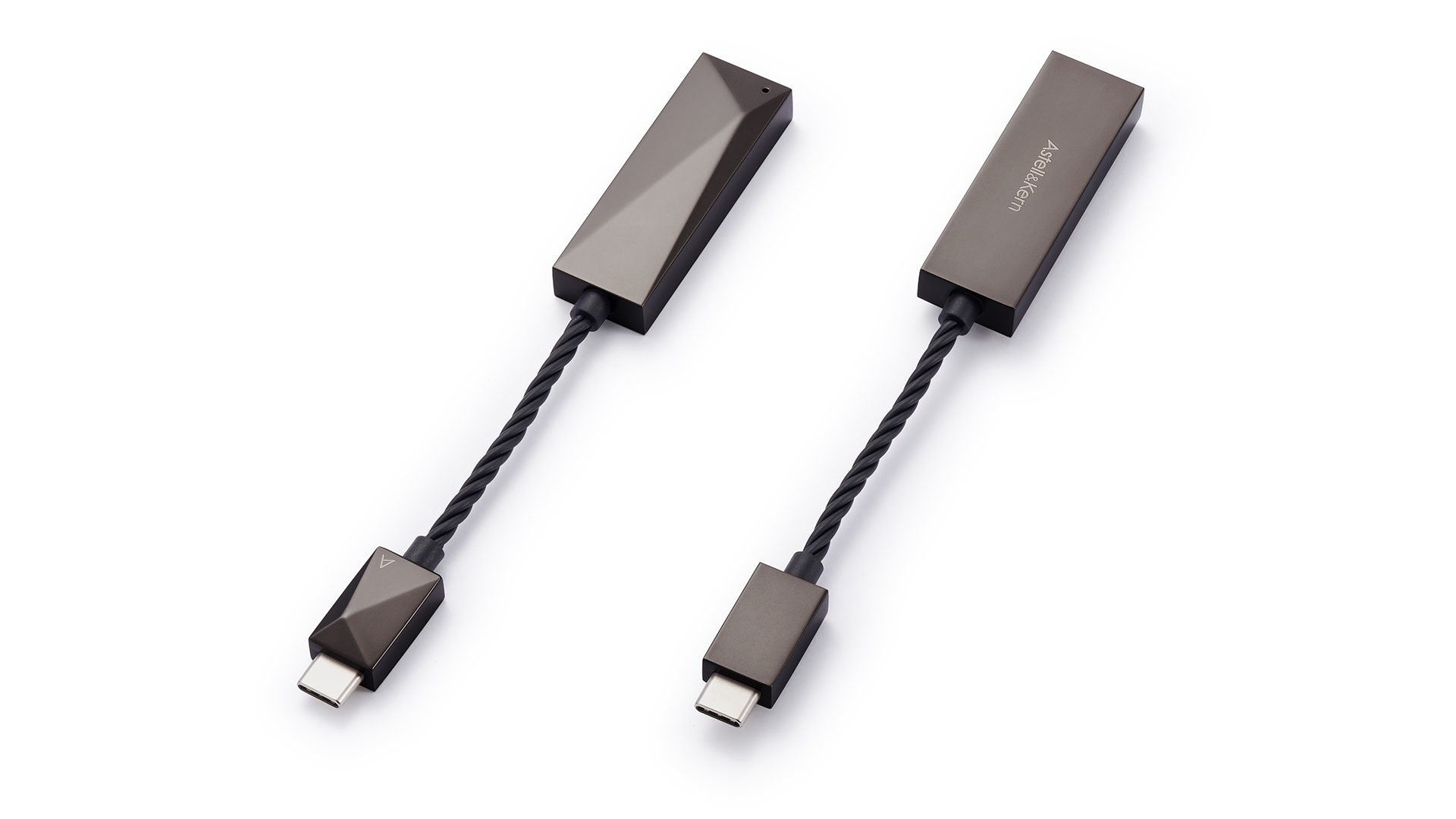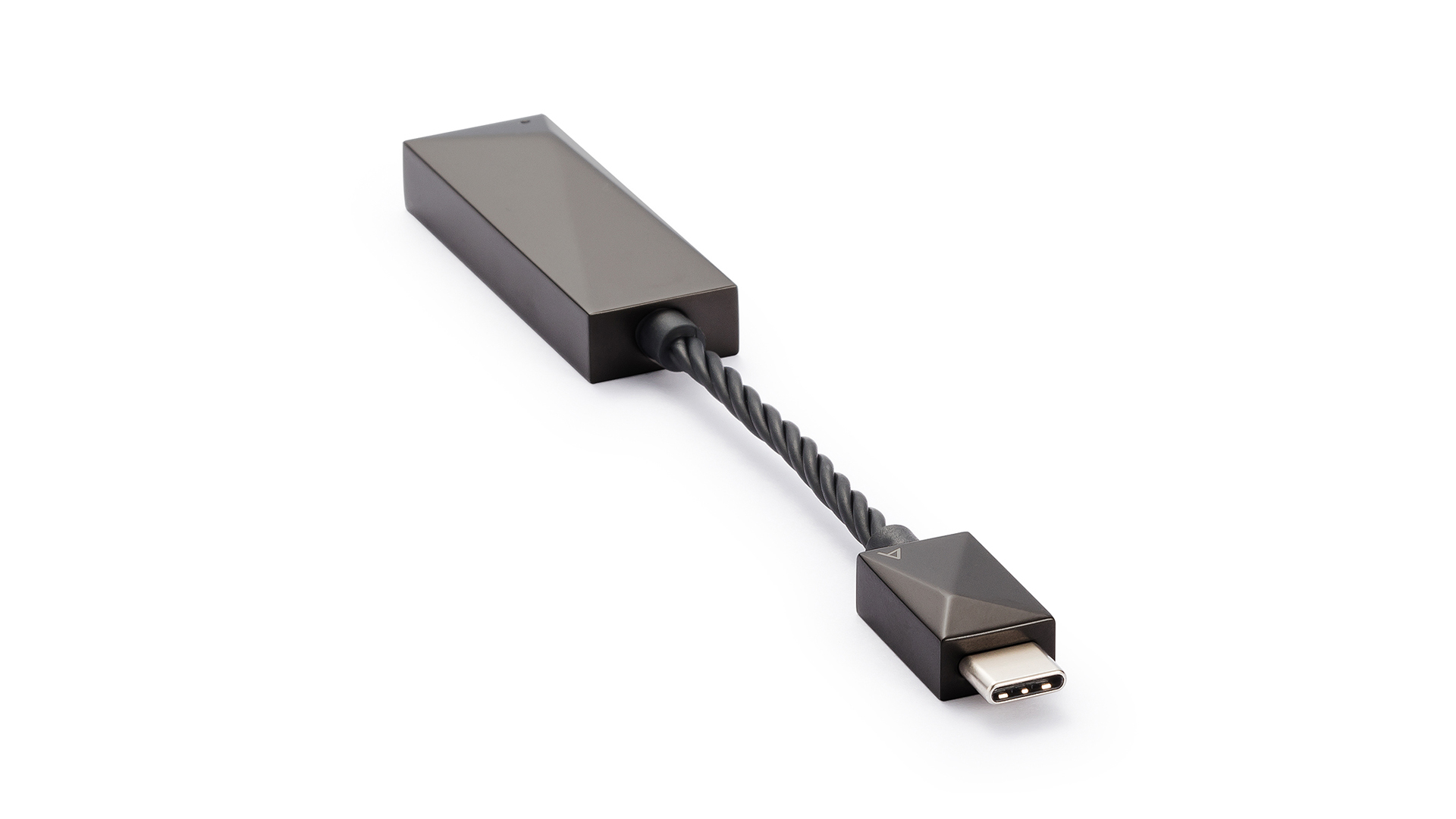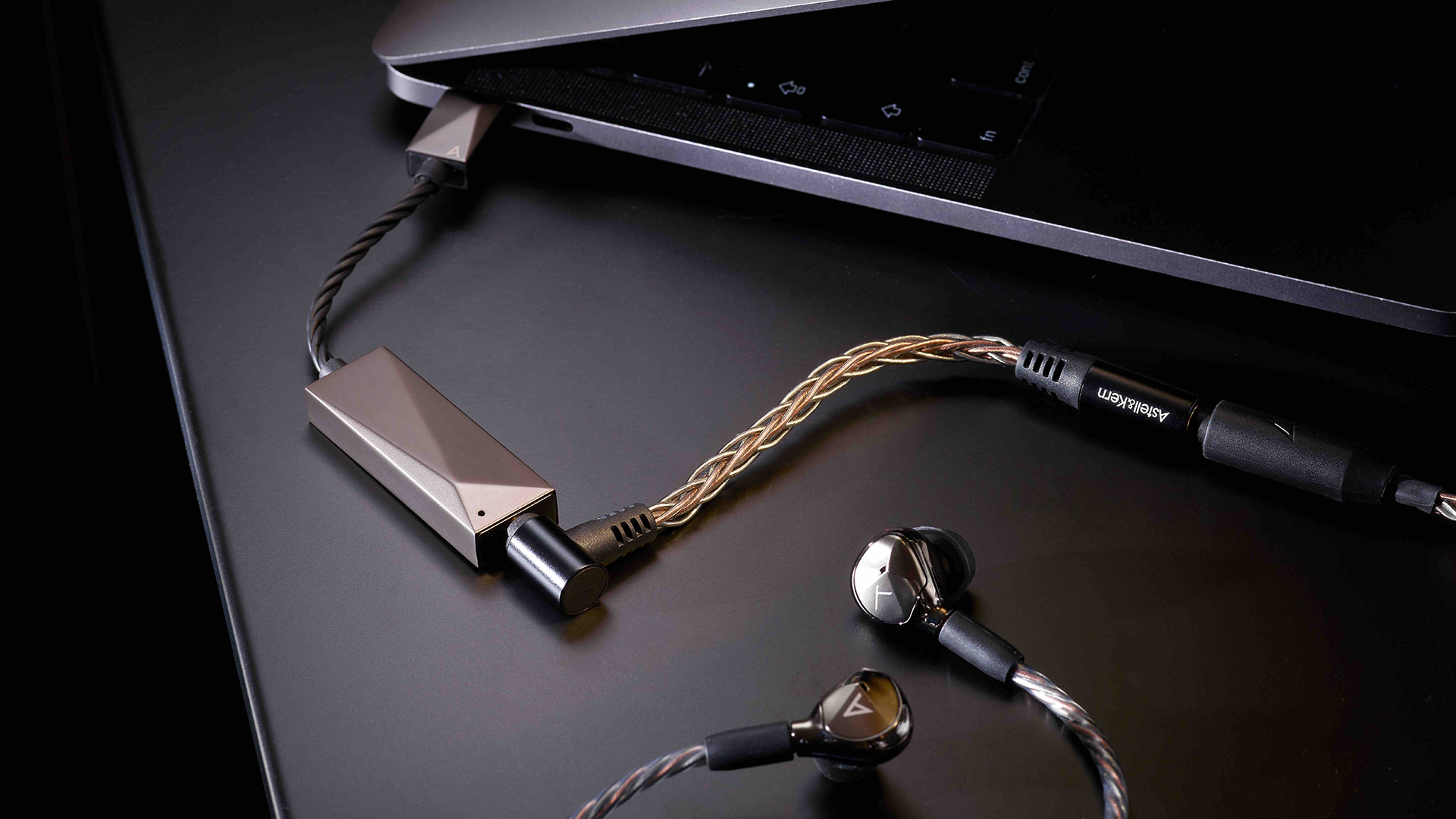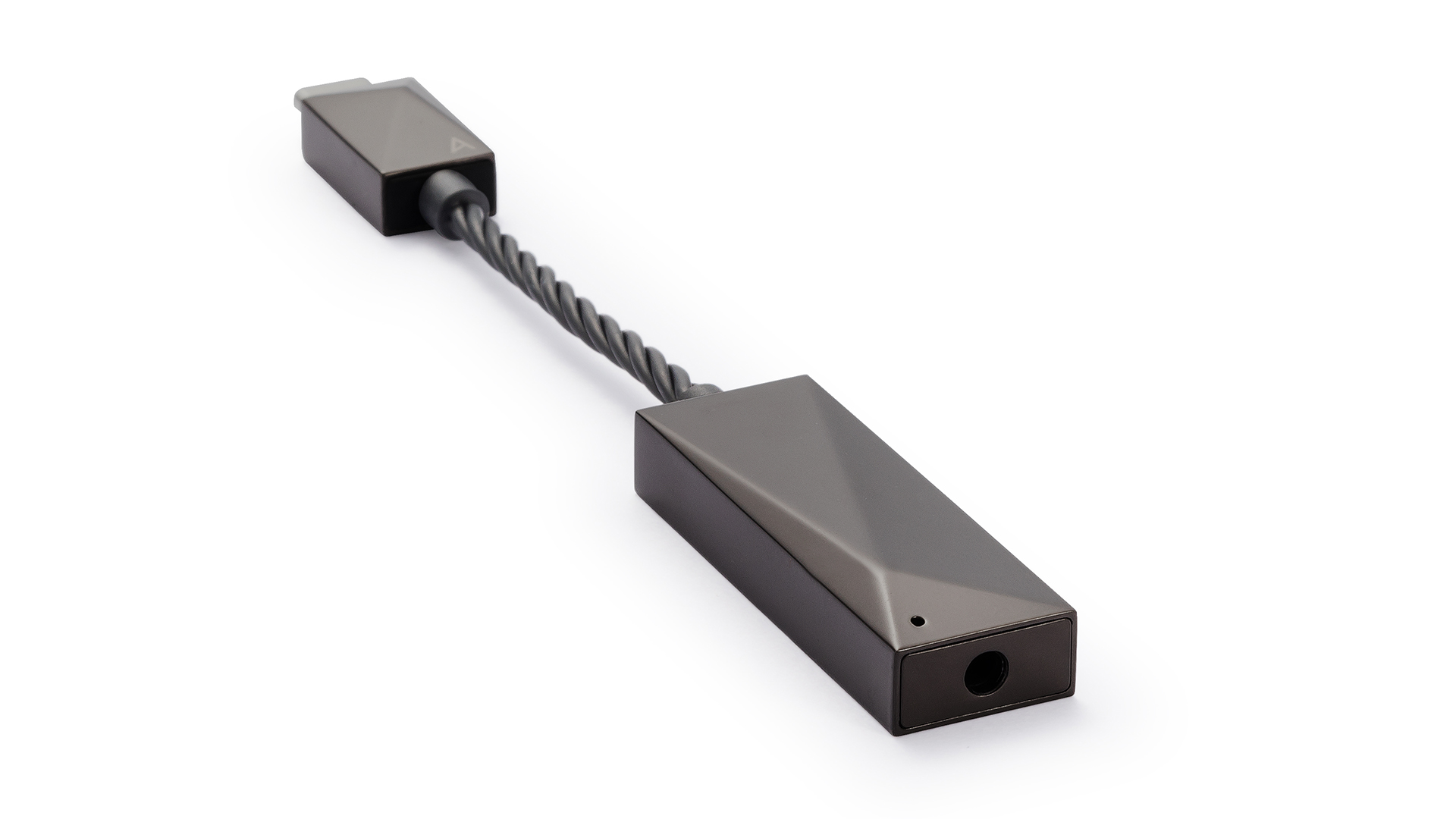What Hi-Fi? Verdict
Astell & Kern’s digital expertise comes good in this entertaining USB-C cable DAC
Pros
- +
Notable improvement to audio
- +
Clean, precise character
- +
Nicely made
Cons
- -
No iOS device compatibility
- -
No MQA support
Why you can trust What Hi-Fi?
For a relatively simple product, Astell & Kern’s first portable DAC has a rather convoluted moniker. ‘Astell & Kern AK USB-C Dual DAC Cable’ isn’t something you’d want to say out loud (or type) often but, to the company’s credit, it sums up the product perfectly: it’s a USB-C cable with two DACs inside.
Thankfully, the name doesn’t attempt to further explain its purpose, so let us fill in the gaps.
Features

Portable DACs – compact DACs that don’t rely on mains power – have arrived in force in recent years with the mission of conveniently improving the sound quality between your phone or computer and wired headphones. That’s because the digital-to-analogue converters and analogue output stages of these do-all devices are generally pretty poor.
Though wireless headphones connected to a device may be the portable audio preference of many nowadays, a wired set-up generally still offers the best performance-per-pound value, particularly if you want to play hi-res audio.

Input USB-C
Output 3.5mm
Hi-res audio PCM 32-bit/384kHz, DSD256
Weight 27g
While there are a number of traditional box or USB stick portable DACs in existence, the AK USB-C Dual DAC Cable is one of an increasingly common group of DACs designed to enhance on-the-go or desktop sound quality in cable form. This Astell & Kern, like the Zorloo Ztella and THX Onyx, is essentially an extension of your headphones cable; the discreet middleman between them and your source device.
At one end is a 3.5mm output, and at the other is a USB-C connection for plugging into any device with that output, such as an Android phone, Windows 10 PC, tablet or MacOS computer. For the bulk of our testing, we use it with a Samsung Galaxy S21 and Apple MacBook Pro.
Some portable DACs, such as the multi-Award-winning Audioquest DragonFly Red, have a USB-A connection instead, but now that USB-C is becoming more prevalent it makes sense for a portable DAC like this one to adopt it. You can always buy a USB-C-to-USB-A adapter to cater for devices with such ports.
The latest hi-fi, home cinema and tech news, reviews, buying advice and deals, direct to your inbox.
Portable DACs can often be used with Apple’s camera adapter to make them compatible with iPhones and iPads, but Astell & Kern says that isn’t the case here “due to the dual DAC incompatibility and power restrictions of iOS devices”. So iPhone users will have to look elsewhere.
The dual DACs (specifically, two Cirrus Logic CS43198 MasterHIFi chips) support native high-resolution audio playback of PCM files up to 32-bit/384kHz and DSD256. However, due to the AK USB-C Dual DAC Cable’s lack of MQA file support, Tidal HiFi subscribers won’t be able to benefit from the (MQA-encoded) hi-res Tidal Masters that are part of the tier’s offering. It’s also worth noting that the DAC has been built for sound output only, so it won’t work with headphones with an in-line remote.
A portable cable DAC is new territory for Astell & Kern – the company is most renowned for its portable music players but also makes headphones and desktop audio systems. But digital-to-analogue conversion technology is something the company is well versed in. And that shows.
For the AK USB-C Dual DAC Cable, Astell & Kern says it developed a circuit chip on a six-layer PCB just 14 x 41mm in size, featuring bespoke capacitors found in its music players, and optimised to prevent power fluctuations. The analogue amplifier (with a 2Vrms output level), meanwhile, is designed to drive even power-hungry and high-impedance headphones.
Sound

We use a range of headphones, from high-end Grados to more modest Beyerdynamic on-ears and Sennheiser Momentum earbuds – and the Astell & Kern doesn’t struggle to power any of them. However, we would be wary of your playback device’s volume output level when you first connect the DAC and plug in your headphones (especially if you’re using more than one pair) to avoid getting an unexpected earful. It’s something Astell & Kern advises in the manual, too.
Adding the AK USB-C Dual DAC Cable between these headphones and our source devices (which provide power to the DAC) makes the world of difference. As the likes of the Zorloo Ztella and Audioquest DragonFly Black have shown, even a modest outlay can make a significant improvement to your portable sound.
The Samsung Galaxy S21 is by no means the worst-sounding smartphone out there, and yet the Astell & Kern makes music come through our wired headphones much clearer, cleaner and punchier than with just a standard USB-C-to-3.5mm dongle. This little DAC doesn’t just do the basics by amplifying the sound and beefing up its tone, it also goes the extra mile to open up music and let you in on more of its detail.
Considering the increasing competition in the portable DAC market, you could say it’s a necessary mile. One of our favourite portable DACs, the Audioquest DragonFly Red, proves to be a notably more insightful and rhythmically entertaining performer – but then it is significantly pricier at £169 ($200, AU$280). For this modest amount of money, the AK USB-C Dual DAC Cable is a very attractive proposition indeed.
We play Lesley by Dave ft Ruelle and the rapper’s poignant storytelling is all the more compelling for the boost in clarity and vocal insight delivered by the DAC. The melodious synth chords, which twinkle with clarity against the contrasting backdrop, are planted with precision on either side.
It’s a similar story as we plug the Astell & Kern into our MacBook Pro and settle into Big Thief’s Shoulder, the presentation pleasantly opened up and generously populated with definition aplenty around Adrianne Lenker’s pleading vocal delivery and the warm textures of the band’s hallmark folksy guitar licks.
Build

So, it sounds good. But what’s it like to live with? After all, this is an everyday device that’s likely to sit in your pocket or on your desktop during the 9 to 5. Perhaps most crucially for a device of this nature, the AK USB-C Dual DAC Cable is compact, lightweight (27g) and well made – to the extent that we feel comfortable tossing it in a bag or shoving it down trouser pockets before long.
The twisted cable between the USB-C output and main body – made up of Technora aramid fibre at its core, wrapped by copper layers and finished with shielding treatment – makes it easy to manipulate the device into a jeans pocket when connected to a phone, and feels built to last. It also helps absorb the shock of accidental knocks, unlike USB stick designs.
While we would expect a device like this to last years, in the weeks we spend in its company we feel confident of its durability. Even when we accidentally yank the device out of our playback source with the cable a number of times, it proves hardy enough to withstand it.
While made to fit nicely into a pocket, some consideration has also clearly been taken to make the AK USB-C Dual DAC Cable look nice when it’s not hidden away – when it’s on a desktop, for example.
The metal casing at the end of the cable – comparable with one of the more compact USB sticks in our collection – has a polished finish and angled surface that resonate with the aesthetic of the company’s premium music players. Design niceties on products like these are only ever going to be the small touches, but they’re here at least.
Verdict
Before Astell & Kern announced its AK USB-C Dual DAC Cable, it wouldn’t have been a stretch to imagine the company making such a product. It has been in the portable digital audio game for years and enjoyed much success.
That know-how has been put to good use in offering USB-C device owners an affordable, practical way to soup up their smartphone or desktop sound through wired headphones. It’s such an appealing option that we can almost forgive the unwieldy name.
SCORES
- Sound 5
- Features 4
- Build 5
MORE:
Read our guide to the best portable DACs
Read our Audioquest DragonFly Red review
Read our Audioquest DragonFly Black review
What Hi-Fi?, founded in 1976, is the world's leading independent guide to buying and owning hi-fi and home entertainment products. Our comprehensive tests help you buy the very best for your money, with our advice sections giving you step-by-step information on how to get even more from your music and movies. Everything is tested by our dedicated team of in-house reviewers in our custom-built test rooms in London, Reading and Bath. Our coveted five-star rating and Awards are recognised all over the world as the ultimate seal of approval, so you can buy with absolute confidence.

